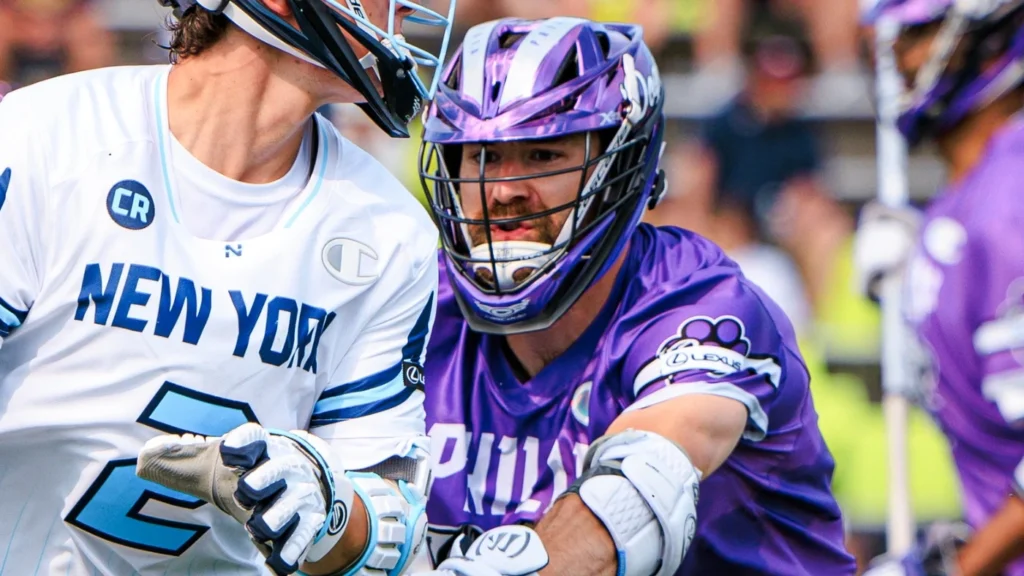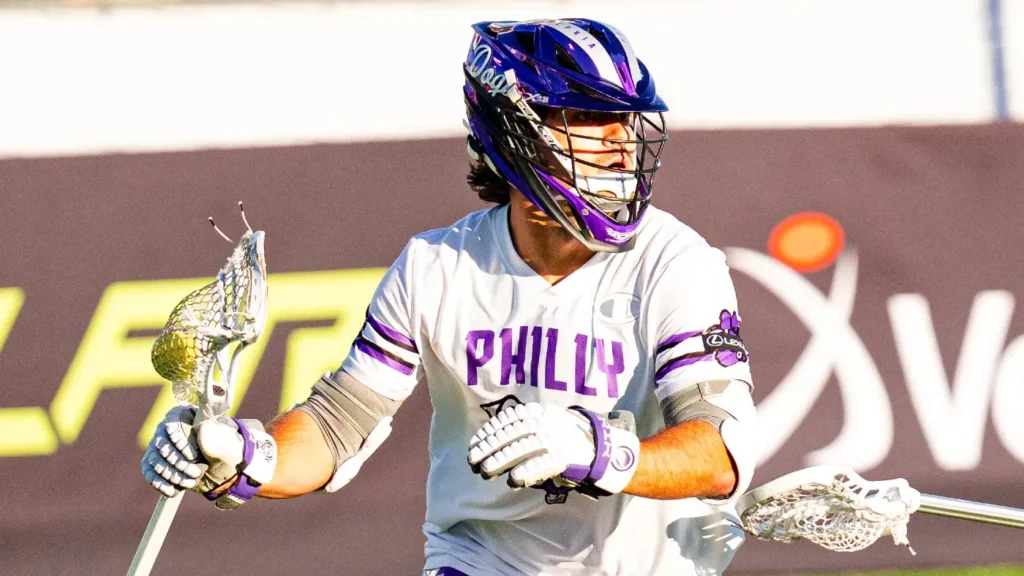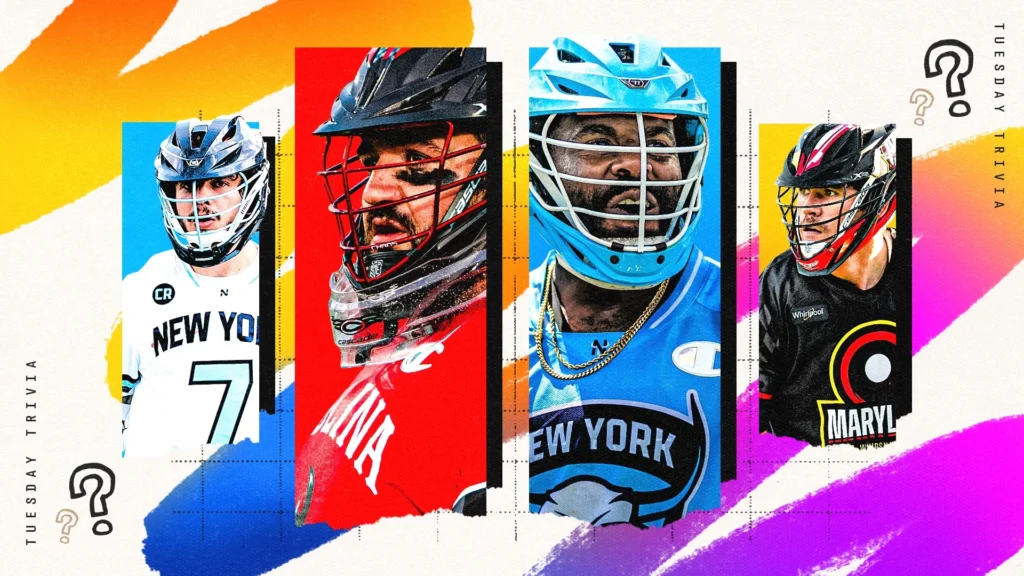When Emmet Carroll jogged onto the field for the Whipsnakes’ must-win regular season finale against the Boston Cannons, the stakes were clear: lose, and Maryland’s season was over. Win, and the Whips were in the playoffs.
By the time the Whipsnakes walked off the field, grinning from ear to ear, after earning their seventh straight postseason appearance, the scoreboard told only part of the story.
The stat sheet showed Carroll allowed just one goal in the second half, but the more telling number was the zero in the “panic” column. After letting up seven goals in the first half, including three straight in a matter of minutes, the rookie goalie steadied not just his own play, but the pulse of an entire season. The Whipsnakes cruised to a 15-8 win.
But that calming presence hasn’t always been there. Carroll has had to work for it and learn how to control it the hard way.
At the University of Pennsylvania, Carroll was a full-time starter by his junior year, but he admits that mentally, he wasn’t fully ready for the role’s demands.
“There were a couple of games where I was just not in it mentally,” he recalled. “I gave up a couple early, and I just kind of went in a landslide the rest of the game.”
The 22-year-old took an almost excessive amount of responsibility for any goal he allowed. In his mind, it didn’t matter that the opposing offense had to beat six of his team’s defenders, or whether the defense played well or poorly — if the ball went in, Carroll believed the blame rested entirely on his shoulders.
“For me, it’s such a mental game,” he said. “As much as you are part of the defense, I think your job is sort of different from anybody on the team.”
That mindset would rattle him on game days, and in his junior year, he admitted he would lose confidence, which would directly correlate with the number of goals Penn allowed a game. Carroll allowed 12 or more goals seven times that season.
But the turning point in Carroll’s mental game came in the fall of his senior year, when Penn’s practices began with drills designed to put the goalie at a disadvantage: small-field games, odd-number rushes, shooter-friendly scenarios. They were exactly the kind of situations that could tank a goalie’s confidence if he let them.
“Naturally, I would get scored on a lot in the beginning of practice,” he said.
Instead of letting the early goals rattle him, Carroll used the sessions as mental sparring.
“I’d think, ‘Alright, that drill was 10 minutes. We have another hour-and-a-half of practice. There’s going to be a game where I start like this and give up two or three right away, and I have to figure out how to stay dialed in for the rest of the game,’” he said.
It was, in essence, mental strength training. Reps in staying calm when the ball kept finding the back of the net. Practice in trusting the next save more than the last goal.
And that practice paid off.
In his final season at Penn, Carroll lowered his goals against average from 11.08 to a career-best 10.21 and cemented himself as one of the nation’s top goalie prospects.
Learning to control his mind in practice and manage his mindset during games taught him that goaltending is inherently psychological.
“You’re the last line of defense, so at the end of the day, if the ball goes in the net, it’s on you,” the third-round draft pick said. “It really is a mental challenge, but over time you can develop that side of it and better yourself both up here [mentally] and also physically with your play.”
When the mental side and the physical align, Carroll describes entering a rare “flow state.”
“You’re seeing the ball, you’re moving on it well, you feel like every shot you have a chance on. That’s a feeling you don’t really get anywhere else,” he said.
It doesn’t happen every game, but when it does, it can swing the outcome – and even the season.
In his second career start against the Carolina Chaos, he racked up a career-high 17 saves with a 73.9% save percentage as Maryland rolled to a 20-6 win.
“Obviously, it doesn’t happen all the time,” Carroll said. “You kind of have to work for it, and that flow state is pretty rare, but when it does, it’s pretty awesome.”
Since then, he’s posted an average save percentage just shy of 60%, recorded two more games with 15-plus saves and taken command of the Whipsnakes defense, despite being one of the youngest on the field.
“Emmet does a great job keeping us focused on the task at hand,” veteran defenseman Matt Dunn said. “He is extremely level-headed and practical. He is steady, which is an incredible trait for a goalie. He shares what he is seeing and helps to keep us on track.”
Dunn’s counterpart, two-time champion Tim Muller, echoed his statement and said that Carroll has “been amazing” in his rookie season.
“He’s the first one to admit that he thinks he should have made a save,” Muller said. “He’ll tell us [close defensemen] to keep it up and keep letting us know what shots he wants to see as the game goes on. He’s also been extremely positive letting us know about the next play and to just keep pushing along. Very impressive for a rookie goalie in how he approaches each possession and quarter.”
Carroll’s style — big frame, willingness to sprawl, plenty of foot saves — reflects the same mindset he built at Penn: do whatever it takes to stop the ball.
“They don’t ask how, they just ask how many,” Carroll said.
His willingness to utilize his body on top of using his stick skills is something he tries to mirror from some of the best in the sport, admiring and studying the games of Blaze Riorden and Brett Dobson.
“I’m a bigger guy, but I end up on the ground a decent amount,” Carroll said. “I feel like I make a decent amount of foot saves. I think just throwing my body around makes me somewhat unique. I think there’s a lot of guys that do it, and a lot of guys that I model my game after in that sense.”
“You look at some of the saves that Blaze Riorden makes, or the way that Brett Dobson kind of shrugs his shoulders at shots, I think there’s a lot of things to take away from those guys,” he continued. “So I’ve always tried to live by that.”





